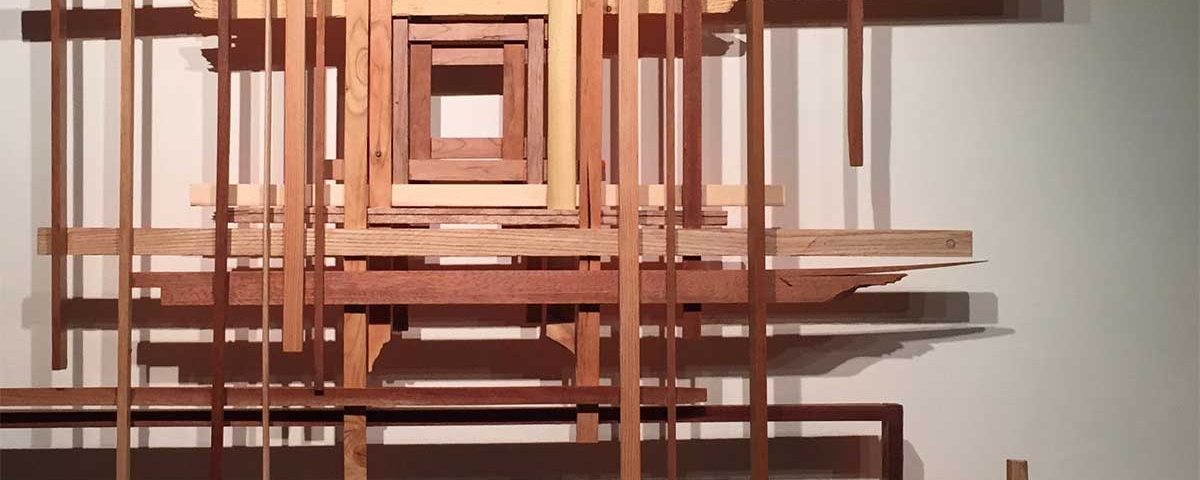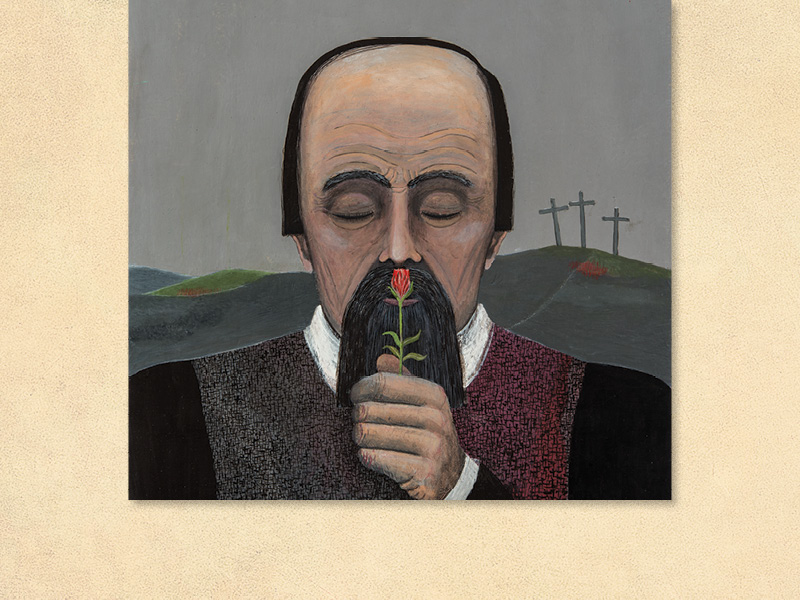REFUSAL- opening of an exhibition in the foyer of Hallgrimskirkja Sunday February 25 at 12.15

The Motet Choir Annual Christmas Concert – Photos
21/12/2017
J.S. Bach‘s St Matthew Passion in Hallgrímskirkja in Reykjavík on Good Friday, March 30 2018 at 6pm
23/02/2018In her work Refusal, which is now on display the lobby of Hallgrímskirkja, at the beginning of the old month of Góa, Kristín works with wood sourced from the lumber shed of a carpentry shop – thus symbolically referencing the existential status of refugees, who are left-over and surplus in their flight from war-torn regions of the world. The wood is used in the form of delicate, fragile laths of various types of timber – hardwood and soft, dark and light – which had roots and grew in different places in in varying conditions, to finish up on the distant shore of Iceland.
The wood is untreated, with visible veins – like a human being. The laths are assembled into a geometrical pattern which recalls the shape of the Christian cross, and also the crosses that must be checked on the endless application forms that must be filled out by applicants for asylum. The cruciform piece is hung on a wall in the church lobby, slightly away from the surface, giving a faint reflection of the bright orange coating on the reverse that references the colour of emergency: the orange-coloured shelters, lifeboats and lifevests of Iceland’s search and rescue teams. The number of crosses in the work is equal to the number of refugees who have been deported from Iceland. On the opposite wall are solid forms made of turned logs, which are reminiscent of swelling maternal breasts, full of love and affection. The wood still shows traces of the bark which envelops and protects the soft interior of the tree; and the form is organic and irregular, evoking the personal bond entailed by the mother’s life-sustaining breastfeeding of her child. Mary’s Breasts are seven in number – a number which is strongly linked to Christian semiotics. Against the third wall hangs a two-dimensional image of a huge heart muscle, cut into sheet plastic in the same emergency-orange colour as resonates in the space between the crosses and the opposite wall.
Kristín’s installation in Hallgrímskirkja is modest and delicate, and at the same time enigmatic, addressing the issue of the increasing flow of refugees to Iceland, and the merciless determination of the authorities to brutally expel most of them from the country.
Guja Dögg Hauksdóttir
Kristín Reynisdóttir (b. 1961) studied 1983-87 at the Icelandic School of Arts and Crafts (forerunner of the Icelandic Academy of the Arts), then at Staatlische Kunstakademie Düsseldorf in Germany 1987-1989. Her works are characterised by an equilibrium between the delicate, the enigmatic, the transparent and the fragile on the one hand, and on the other powerful emotion and persuasiveness, as witness the titles of her shows from the outset: Strings, Contact, Travel, Folds and I Am Here. In recent years Kristín has established links with other artists whose common ground is the Nordic countries and the ocean bordering the countries of northern Europe, who have held group exhibitions on the basis of artistic creation based in a philosophical perspective on the existential conditions of life in northern climes. Her works in that context include Travel West – Caul and Red Snow – Ice in Motion: exhibitions which have travelled widely in the northern region; and also Behind the North Wind – Hearts in Bonhoga Gallery, Shetland, and Shapeshifting – Vertebral Column in the Factory at Hjalteyri, north Iceland. Kristín’s works are often installations in spaces, which both address the specific site and consider collective human factors with reference to experiences and emotions. Kristín selects the materials for her works by reference to their capacity to convey meaning. She has thus worked with such diverse materials as plexiglas and wood, brightly-coloured plastics and a sheep’s caul (amniotic membrane), while also working with daylight, shade and darkness as fellow-actors in the manifestation and perception of her art.


